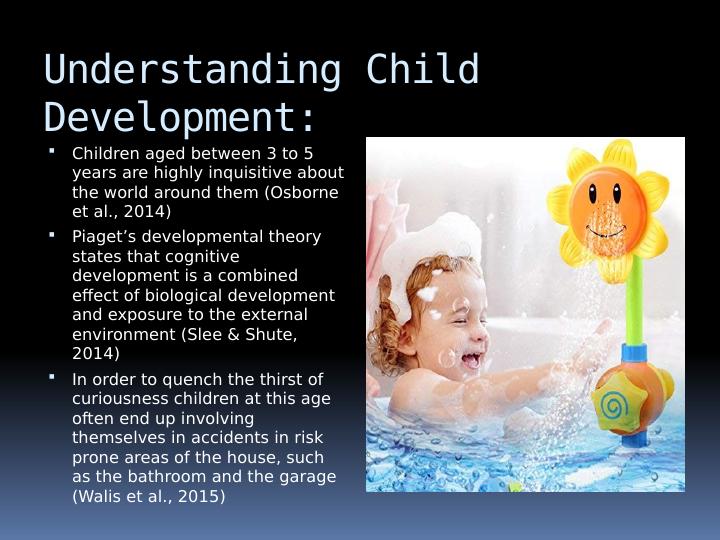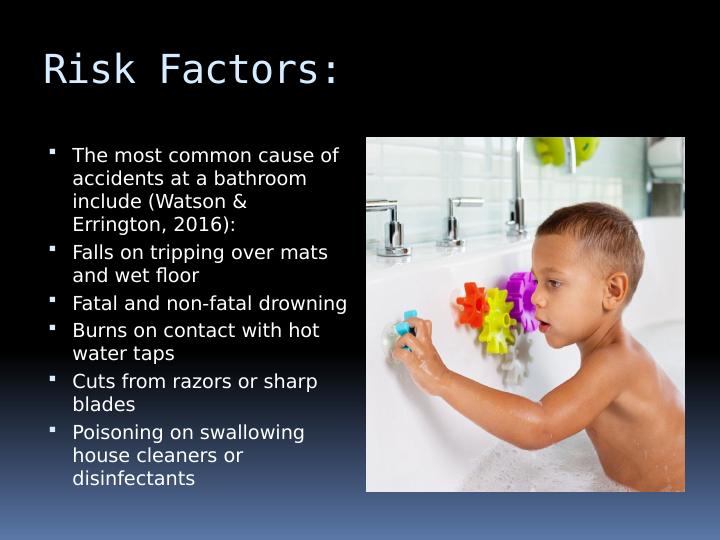Child Safety Practices: Understanding Risks and Preventive Measures
Provide examples of how nurses implement best practice for Aboriginal and Torres Strait Islander women who experience mental health issues, as outlined in the NMBA 2018 Code of conduct for nurses’, Principle 3: Cultural practice and respectful relationships.
13 Pages1154 Words180 Views
Added on 2023-06-04
About This Document
This presentation discusses statistical evidence of child injuries in the bathroom and garage areas, understanding child development, risk factors, and preventive measures for parents and children. The presentation emphasizes the importance of educating children about the risks and taking steps to reduce mishaps.
Child Safety Practices: Understanding Risks and Preventive Measures
Provide examples of how nurses implement best practice for Aboriginal and Torres Strait Islander women who experience mental health issues, as outlined in the NMBA 2018 Code of conduct for nurses’, Principle 3: Cultural practice and respectful relationships.
Added on 2023-06-04
ShareRelated Documents
End of preview
Want to access all the pages? Upload your documents or become a member.




